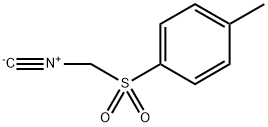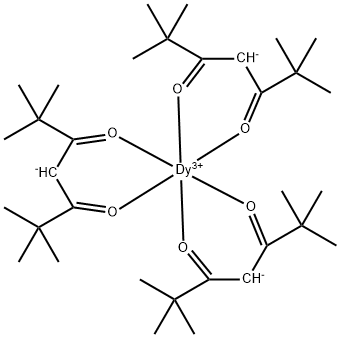Olibanum oil
Synonym(s):Olibanum oil;Frankincense;FRE;FRITZ;FRP-3
- CAS NO.:8016-36-2
- Empirical Formula: C63H98O6
- Molecular Weight: 0
- MDL number: MFCD00217616
- EINECS: 232-482-5
- Update Date: 2025-01-27 09:38:02
What is Olibanum oil?
Description
Olibanum is a gum resin secreted by several Boswellia species that grow extensively from South Arabia to Somaliland. The small trees or shrubs yield an exudate after incisions are made on the bark; it consists of a milky liquid that hardens into small, yellowish droplets commercially known as incense tears. The tears are sorted; the most valuable quality (white tears) is sold as burning incense, while the less valuable qualities (powder and fragments) are used in flavors and perfumes because of their more reasonable cost. The part used is the gum resin exudate.
Chemical properties
Olibanum oil and olibanum resinoid are obtained from frankincense, which
is a gum resin collected from the bark of the tree Boswellia carteri Birdw. or
Boswellia frereana Birdw. (Burseraceae) growing in Arabia and Somalia. The
resinoid is produced by solvent extraction, and steam distillation gives the oil,
which is a pale yellow, slightly viscous liquid with a balsamic odor and a faint
lemon note.
d2525 0.862–0.889; n20D 1.4650–1.4820; α20D ?15 ° to +35 °; solubility: 1 vol in 6 vol
of 90% ethanol, solutions occasionally opalescent; acid number: max. 4.0; ester number: 4–40.
Various qualities are commercially available. Their compositions may vary considerably
because they are prepared from the resins of different Boswellia species.
Main constituents of the oil are monoterpene hydrocarbons.
Olibanumoil and resinoid are used in oriental-type perfumes, the resinoid especially
for its good fixative properties.
Chemical properties
The oil, obtained by steam distillation of the trees B. carterii Birdw. and other Boswellia species, has a balsamic, slightly citrine odor.
Physical properties
It is a pale-yellow liquid. It is soluble in most fixed oils and with a slight haze in mineral oil. It is insoluble in propylene glycol and glycerin.
The Uses of Olibanum oil
olibanum oil is a fragrance component. It is astringent with slight anti-inflammatory properties.
The Uses of Olibanum oil
frankincense (Boswellia thurifera) is described as anti-inflammatory and a mild antiseptic that brings relief to dry and sensitive skins and helps heal all types of wounds. Its astringent properties are said to help balance oily or overactive skin. This is one of the oldest essential oils in use, and dates back to ancient egypt.
Definition
Extractives and their physically modified derivatives. Boswellia, Burseraceae.
Properties of Olibanum oil
| Boiling point: | 140 °C(lit.) |
| Density | 0.870 g/mL at 25 °C(lit.) |
| refractive index | n |
| FEMA | 2816 | OLIBANUM OIL (BOSWELLIA SPP.) |
| Flash point: | 47 °C |
| storage temp. | -20°C |
| Odor | at 10.00 % in dipropylene glycol. terpenic incense peppery spicy old wood woody pine resinous |
| optical activity | [α]/D 17.0 to 10.0° (neat) |
| EPA Substance Registry System | Olibanum oil (8016-36-2) |
Safety information for Olibanum oil
| Signal word | Warning |
| Pictogram(s) |
 Flame Flammables GHS02 |
| GHS Hazard Statements |
H226:Flammable liquids |
Computed Descriptors for Olibanum oil
Olibanum oil manufacturer
ARRAKIS INDUSTRIES LLP
New Products
3-Iodophenylacetic acid 3-Pyridineacetonitrile, α-hydroxy- 2-Propanamine, 1-chloro-, hydrochloride (9CI) 3-(hexyloxy)-4-(pyridin-3-yl)-1,2,5-thiadiazole 2-Hexyn-1-ol Dibenzo-18-crown-6 Nickel(II) perchlorate hexahydrate, 98% 4-Bromophenylacetonitrile, 95% 3-Bromo-4-fluoroaniline, 97% Sodium tetraborate decahydrate, 98% Palladium(II) acetate, trimer, Pd 99% 4-Bromo-2-chlorotoluene, 97% N N Dimethylformamide Dimethyl Acetal (Dmf Dma) 2,3-Dichloro Benzoyl Cyanide [Side Chain] Bis(2-Chloroethyl) Amine Hydrochloride L-Glutamic Acid Diethyl Ester Hydrochloride 5-(Difluoromethoxy)-2-Mercaptobenzimidazole 1-Ethyl-3-(3-Dimethylaminopropyl)-Carbodiimide Hydrochloride [EDC Hcl] 1,4-Napthoquinone Bromoiodomethane Sodium Bicarbonate Methylene Dichloride (MDC) Ethyl Acetate Indole-3-Carbinol (I3C)Related products of tetrahydrofuran








You may like
-
 8016-36-2 Olibanum oil 98%View Details
8016-36-2 Olibanum oil 98%View Details
8016-36-2 -
 Olibanum Oil 99%View Details
Olibanum Oil 99%View Details -
 8016-36-2 EASTER GUM 99%View Details
8016-36-2 EASTER GUM 99%View Details
8016-36-2 -
 Frankincense oil CAS 8016-36-2View Details
Frankincense oil CAS 8016-36-2View Details
8016-36-2 -
 ANTI-FRZB antibody produced in mouse CASView Details
ANTI-FRZB antibody produced in mouse CASView Details -
 ANTI-FRZB antibody produced in mouse CASView Details
ANTI-FRZB antibody produced in mouse CASView Details -
 ANTI-FRZB antibody produced in mouse CASView Details
ANTI-FRZB antibody produced in mouse CASView Details -
 132945-75-6 (S)-1-Boc-3-methanesulfonyloxy-pyrrolidine 98+View Details
132945-75-6 (S)-1-Boc-3-methanesulfonyloxy-pyrrolidine 98+View Details
132945-75-6
